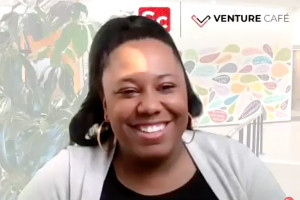5 Tips For a Memorable Elevator Pitch
A good “elevator pitch” is an essential tool in any professional’s arsenal. Although the term started as a way to explain your business and try to make a sale if you landed in an elevator with a prospect client, your pitch should really not involve sales. It should explain who you are and what you do. But with just 30 seconds or so to make your pitch, it’s a difficult art to master.
At networking events, there are usually multiple people in the same career role such as realtors, financial advisors or photographers. The pitch is about how you set yourself apart. Why would someone buy a house from you as opposed to the five other realtors in the room? What makes you the best financial advisor or photographer?
I know it’s difficult to convey a lot of important information in just 30 seconds or so — but it’s unavoidable in today’s age of networking. But it’s important to remember that your pitch should not involve a “kitchen sink” approach. It should be a teaser, making them want to learn more.
Follow these five steps and make your elevator pitch a memorable one:
1. This is not the place to show your knowledge of big words and fancy speak. A lot of people spend time perfecting the perfect prose for their pitch that ends up sounding like something you would read in a bio or scholarly article. When they deliver this type of pitch, it comes across canned and non-authentic. Be sure not to use acronyms or industry jargon in your pitch as well. In my opinion, be yourself and speak the way you talk in regular conversation. The delivery will be seamless and people will remember you.
2. Change your pitch based on your audience. A 30-second pitch is not one size fits all. Prepare several versions of your pitch to tailor them based on the event and audience. For example, I do one-on-one consulting but I also do speaking and workshops. If I attend an event where the majority of attendees are solopreneurs or small business owners, I’ll focus on the one-on-one consulting. However, if I attend an event where the attendees are more of a corporate audience, I’ll focus my pitch on the keynotes and workshops I can offer. Even if you attend a group regularly with the same audience I would recommend changing up your pitch. Keep it interesting and fresh.
3. Think about a tagline. This is not mandatory but some taglines are very memorable. This may be something you think of over time. A fun way to approach this might be to crowdsource on Facebook and ask your network what they think a good tagline for your business might be. You can use it in your pitch, on your business card, at the close of your email responses, and anywhere else you think it would be helpful and leave an impact. Bonus points if it rhymes.
4. Focus on solving a particular problem that people can relate to. By doing so, this will resonate with people either for themselves or in order to easily refer you to someone that might need your services. For example, let’s say your business delivers healthy, ready-to-eat meals for families. You could pitch it this way:
It’s 6:30 PM and you just walked in. Before you can sit down, you’re being asked ‘What’s for dinner?’ Wouldn’t it be nice to have a healthy meal already prepared so you can unwind and enjoy some time with your family? Our business can help bring your family together and provide a nutritious meal everyone will love. . .
Even if someone in the room doesn’t need this service, maybe they know of a mom that just returned to work and is complaining about how to deal with the long hours and get dinner on the table at a reasonable time. They can solve her problem by referring your business services to her.
5. Know when to give your pitch, and know when to abandon your pitch. Your pitch should be prepared for those times during a networking event where you are specifically asked to give your pitch. If you’re at an event where there is open networking and you are introducing yourself to someone or are engaged in conversation and are asked what you do, please don’t launch into your pitch. There are ways to have a conversation about what you do without operating on autopilot. This is not the time and place for your pitch. It’s also best in these type of conversations to ask questions and really listen to people’s needs first to tailor the discussion of what you offer accordingly.
Jennifer Lynn Robinson is the CEO of Purposeful Networking. She conducts keynotes, workshops and seminars assisting companies, non-profits, groups and conferences to help ensure your networking is working for you. You can connect with her at on Twitter, at purposefulnetworking.com or Jennifer@purposefulnetworking.com.



